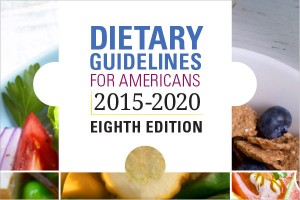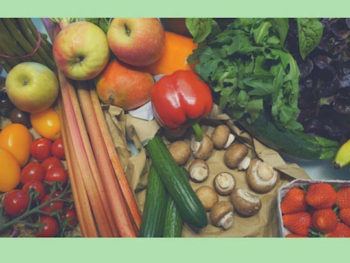Below is my blog post for Huffington Post, “The new dietary guidelines recommend eating more fruits and vegetables, less added sugar and saturated fat.”
You can also read it HERE.
The 2015-2020 Dietary Guidelines for Americans were released earlier this month. The guidelines, updated every five years by the U.S. Department of Health and Human Services and the U.S. Department of Agriculture, are based on the latest research in nutrition science and serve as a basis for federal nutrition policy.
They also help to set the tone for how we should eat. The current guidelines recommend that Americans consume a “healthy eating pattern” consisting of more fruits, vegetables, and whole grains and limiting added sugar, salt and saturated fat.
Here are several key take away messages.
1. Focus on healthy eating patterns.
For the first time, the report emphasizes that Americans focus on foods and healthy eating patterns as opposed to individual food groups and nutrients. I commend this as we do not eat individual nutrients in isolation, but rather a diet composed of foods, which forms an eating pattern.
According to the guidelines, a healthy eating pattern consists of a diet with more fruits, vegetables, whole grains, and low-fat dairy; and less added sugar, sodium, and saturated fat. The guidelines emphasize a variety of vegetables from the different subgroups (think colorful!) and half of all grains should be whole grains including oatmeal, quinoa, and whole grain breads, for example. Sorry Paleo lovers! Dairy and healthy grains are indeed part of a healthy diet.
2. Added sugar
This is the first time the committee made a specific recommendation for limiting added sugar. Too much sugar is linked to obesity and chronic disease and as a nation, we eat too much, with soft drink being a major contributor.
The guidelines recommend a daily intake of 10 percent of calories, which amounts to around 12 teaspoons of sugar, for a 2,000-calorie diet. This translates into just a tad more than a can of soda. Yikes!
We currently consume 22 to 30 teaspoons of added sugar daily, half of which come from soda, juices and other sugary drinks. So, for a first step, I suggest skipping these sugary beverages.
As a nutritionist advising clients, I often get asked about eating fruit. Added sugar is NOT the same as naturally occurring sugar so you can enjoy fruit. All fruit fits into a healthy diet; however, I suggest skipping the juice and eating the whole fruit instead. Fruit is higher in fiber, contains a greater water quantity, and therefore, is lower in calories than the juice. As I say, “While I don’t suggest eating unlimited amounts, no one got fat eating fruit.
3. Saturated fat
Despite some observations that saturated fats are not linked to heart disease, the guidelines advise, like they did in previous editions, to limit saturated fat to no more than 10 percent of calories. Saturated fat is found in red meat, fried foods, butter, and full-fat dairy. The guidelines further recommend that teenaged and adult males should reduce their consumption of protein including meats because of heart disease, some types of cancer, and other health concerns. I think this advice should actually be embraced by the rest of us.
4. Cholesterol
The guidelines dropped its long recommendation that Americans limit their intake of dietary cholesterol from foods such as eggs and shellfish to no more than 300 mg per day. (One egg contains nearly 200 mg cholesterol.) However, the report also states that we should eat as little cholesterol as possible. This advice appears to be confusing. While the cholesterol recommendation is not in the headlines, the report does, indeed, recommend minimizing our consumption and says to limit cholesterol to 100-300 mg/day. So no, you cannot eat an unlimited quantity of eggs.
Also, since many foods high in saturated fats also contain cholesterol, if we reduce our saturated fat intake, this will probably help us lower our dietary cholesterol.
5. Sodium
The guidelines say we should consume no more than 2,300 mg sodium, which is no change since the 2010 edition. The report also advises that certain people include those with hypertension and diabetes — which comprise nearly two-thirds of us — further reduce sodium to 1,500 mg.
2,300 mg sodium translates into just one teaspoon of salt. So we certainly should throw away the salt shaker. We should also limit foods high in sodium including deli meats, breads, soups, and pizza. One great way to limit our salt intake is to eat less processed food and to cook more.
6. Portion control
While the previous edition of the guidelines advised us to “avoid oversize portions,” this edition says “focus on variety, nutrient density, and amount.” Since many restaurant portions are oversize and contain far more calories than most of us need, I do not think that the 2015-2200 guidelines emphasized portion control and calories nearly enough. Especially with obesity still on the rise.
Buried in the report, however, the feds do suggest reducing portions of sugar-sweetened beverages and decreasing portion sizes of grain-based and dairy desserts and sweet snacks.
So here’s my advice: With the exception of fruits and veggies, watch your portion size, and don’t eat and drink too much.
Follow Dr. Lisa Young on Twitter: www.twitter.com/drlisayoung



